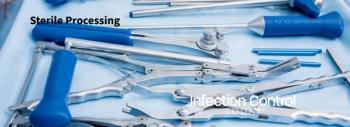
Surveying Sterile Processing and How Regulatory Bodies Have Shaped the Sterile Processing Community
By Ashley Brooks BA, CRCST, CFER; and Jonathan Reimer, MBA, CRCST
Regulatory bodies have impacted sterile processing and surgical standards significantly over the years. The standards, regulations, and recommendations are changing daily as sterile processing and operating room associates try to maintain the modifications in conjunction to meeting the expectations of daily operations. The Joint Commission (TJC) and Centers for Medicare and Medicaid (CMS) both set standards in healthcare but vary in their focuses and methods. The major difference between the two regulatory bodies is that CMS is the law and is managed by the government and TJC is an independent, non-profit organization and has no legal authority over hospital organizations, but further set standards for those hospitals.
TJC certifies and accredits nearly 21,000 healthcare organizations in the United States. TJC is a governing body which provides hospitals their certification, should they meet their standards. TJC prefers to focus its attention on clinical practice and emphasizes heavily on clinical work processes during hospital surveys. TJC mimics the standards established by the Association for the Advancement of Medical Instrumentation (AAMI) and the Association of perOoperative Registered Nurses (AORN) for practices in sterile processing areas.
For sterile processing, TJC is often looking to see if staff can demonstrate and speak to their work processes in accordance with AAMI and AORN standards. TJC will look heavily at department policies and procedures and education and concentrate on the clinical processes performed by the department. TJC will also note what type of products or equipment being used and follow up to see if staff members are using them in accordance to manufacturers' instructions for use (IFUs). Failure to meet TJC’s standards during a survey will result in a follow-up action plan, possibly losing certification, and possibly prompting a survey from CMS.
CMS will perform a hospital survey to ensure that patient safety is not being compromised and that basic healthcare standards are being upheld. CMS will often utilize local department of health experts to perform their surveys in certain states. CMS surveys can be very attentive from a documentation and management perspective. CMS generally likes to focus on departmental quality data, audits, metrics, and policies and procedures. The latter, as well as individual employee files, and education and competencies are extremely important information often requested from a CMS surveyor during a hospital survey. Onboarding practices for new hire training are also critical during a CMS survey. When CMS observes that patient safety is being compromised and standards aren’t being met, hospitals risk losing Medicare and Medicaid funding; the agency will revoke this funding from any hospital failing to meet its standards or requirements.
Hospital leadership and other stakeholders often lack knowledge when it comes to sterile processing. Most of them do not understand the difference between a washer-disinfector and steam sterilizer. A major reason is because sterile processing is truly a support department and is a non-revenue generating department. Revenue-generating departments often receive the most attention from hospital executives. Sterile processing is also still relatively unfamiliar to the public, resulting in lack of understanding or scrutiny of practices.
Therefore, hospital leadership often does not recognize its importance and how critical a department it is -- and not understanding the consequences until it is too late. Some of these consequences include infections that jeopardize patient safety, surgeons threatening to leave because of a lack of instrument availability, lawsuits, public scrutiny, loss of Joint Commission certification, and government funding being revoked, resulting in the hospital to close.
Another influential component of sterile processing is the need for appropriate capital equipment, such as sterilizers, washer-disinfectors, ultrasonic cleaners, proper sinks, case carts, storage shelving, instrumentation, and sufficient work stations. Capital dollars are very limited in many hospitals today. Healthcare institution leadership executives will often invest the hospital’s revenue into departments where it will realize a return on investment with those purchases and receive immediate revenue from each purchase.
Because sterile processing is hidden from the public and does not make direct revenue, they are often one of the last departments in the hospital to receive capital funding for new equipment. When this occurs, the quality of cleaning, disinfection and sterilization are compromised, along with a major impact to productivity and process flow. When you do not have the correct equipment to perform your tasks, your process and standards will often be inhibited, leading to an unsuccessful hospital survey.
There are many key areas to focus on to ensure your hospital will have a successful survey around sterile processing. The most important area that is a priority for both CMS and TJC is the inspection and evaluation of a hospital’s surgical instrument pre-cleaning process and policy and procedure. The proper cleaning and care and handling of instruments starts with the implementation of a proper pre-cleaning process. Your facility should have a standard surgical instrument pre-cleaning policy reflecting AAMI and AORN pre-cleaning standards. All departments that use reusable surgical instruments need to be able to speak to and demonstrate these standards and policy. A surgical instrument pre-cleaning policy should be accompanied by a standard hospital competency. It is advised to provide hospital-wide training for each department around the proper pre-cleaning and transport process. To help ensure standardization and sustainability of this process in your facility, it is best to conduct regular tracers around surgical instrument pre-cleaning and transport.
The second high-priority area is your institution's cleaning, disinfection and sterilization processes. Staff working in these areas need to be able to speak to the various manufacturer instructions of the products and equipment they use. Cleaning detergents have minimum soak times, proper mix ratios, and temperature ranges that must be met. All cleaning brushes should follow manufacturer instructions when it comes to the disposal of them and if they can be reused. Sterilization filters, peel pouches, and wrap should be packaged in accordance to manufacturers' IFUs. All instruments must be completely open and unlatched in these various types of packages to ensure proper sterilization. Staff need to operate and maintain washer disinfectors, ultrasonic cleaners, and sterilizers in accordance to their manufacturer instructions. Daily quality tests on these types of equipment need to be performed and documented properly in accordance to AAMI ST79 Standards. Verifying the manufacturer operating instructions of all products being used in this area should be done on a regular basis.
Another top priority is to focus attention around data and documentation management. Sterilization-load records are often not filled out properly or unorganized during a survey. Each hospital should have an organized process for logging all the necessary records needed to meet AAMI ST79 Standards. Each hospital’s temperature and humidity monitoring data for proper storage of surgical instrumentation is a major focus brought up on almost every CMS or TJC survey. This process should be standard across your facility and should be audited on a regular basis. The hospital’s process for transport and storage of sterile instrumentation are often missed when hospitals are evaluating their high-risk focus areas pre-survey. These focus areas should follow AAMI ST79 standards. These records should always be organized and stored in a manner to be presented to a surveyor at any time.
The final high-priority area is maintaining adequate policies, education, competencies and onboarding in your sterile processing department. Policies for your department must be updated and need to align with various manufacturer instructions and AAMI standards. The sterile processing department's policies should also not contradict any standard hospital policies. Certain policies should be unique to sterile processing and certain policies used in sterile processing might be hospital-wide policies. All the policies should be accessible to all staff and all staff should be able to speak to these policies and their procedures.
Education should be performed for each employee and be documented consistently throughout the department. Education and in-services should be performed every time a new product is implemented or used. Competencies seem to be the most common documentation missing during a regulatory survey. Your department should have a set of annual competencies for each employee and updated at least yearly and align with your policies. You should have a competency for each major process performed in your department and/or where you have a policy in place. Your department’s onboarding process needs to be consistent and standard with each sterile processing employee. Every employee should have standard onboarding documents in their file showing they have been successfully onboarded. It is best to have one department master spreadsheet listing all the yearly education, competencies and in-services performed for each employee. This will allow for you to manage the documentation regularly for each employee and allow you to see any outliers. Surveyors like to see organization around how each department monitors and tracks their policies, education, competencies and onboarding documentation.
Healthcare standards are ever-changing, and sterile processing standards are always increasing for the better of patient care. Regulatory bodies will always enforce these standards and perform surveys to hold hospitals accountable. Sterile processing will only continue to be more of a priority going forward. The more people learn about the importance of sterile processing and the repercussions when it is not executed to standards, the more key stakeholders will start noticing and change their strategies toward it.
Infection prevention has always been a top priority in the eyes of a surveyor and sterile processing is a major factor as to each hospital’s outcome in the survey process. Proper infection control and sterile processing go hand in hand, and both cannot be successful without the other. As long as we continue to focus on sterile processing as a priority, the necessary changes will follow and force key stakeholders to provide more support and resources where they are needed.
Ashley Brooks, BA, CRCST, CFER, is a clinical instructor with STERIS Instrument Management Services. She has been educating and training sterile processing professionals for more than five years. Her specialty is standardizing processes for best practices in several hospitals across the U.S.
Jonathan Reimer, MBA, CRCST, is the corporate director of sterile processing and surgical instrumentation for Tenet Healthcare, where he manages sterile processing and high-level disinfection for more than 70 hospitals across the U.S. He is a national expert in the areas of regulatory, quality, infection control, and patient safety in healthcare.
Newsletter
Stay prepared and protected with Infection Control Today's newsletter, delivering essential updates, best practices, and expert insights for infection preventionists.






